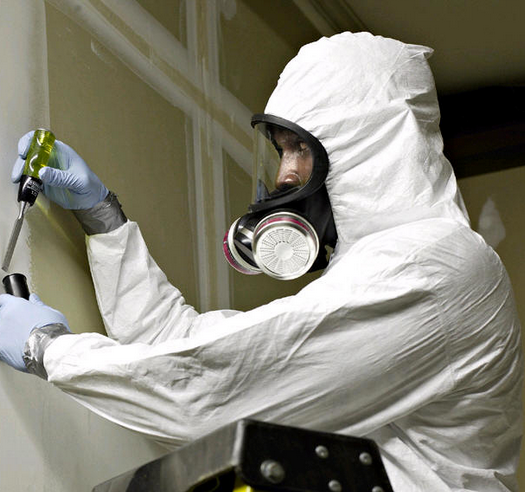Asbestos is a naturally occurring mineral with a host of seemingly extraordinary qualities. Strong, durable, with heat resistant and insulating properties, it can be put to a remarkable number of uses. It’s also easy and cheap to produce.
Consequently asbestos has been mined in locations worldwide and used in an astonishing number of ways from ship building, construction and the automobile industries, to furniture and clothing manufacture, plastic and household laundry products. The list is endless and covers every aspect of commercial and domestic life.
Warning Signs Are Ignored
By the mid 20th century research had established a link between exposure to asbestos fibres and a number of serious respiratory diseases. By the 1920s leading medical journals were publishing reports on the dangers of asbestos-related illnesses and instances of related diseases continued to rise. However several decades were to pass before any form of regulation to limit its use were put in place.
As the medical evidence started to increase, so did the influence of the thriving and prosperous asbestos companies. Indeed in more recent years the growing economic influence of developing countries has led to a massive increase in demand for cheap construction materials.
Production Marches On
Whilst production of blue and brown asbestos is now banned worldwide, mining of white asbestos is still legally acceptable and continues to flourish. Canada, Russia, Zimbabwe, India and Brazil are all major producers.
Indeed experts employed by the industry have even argued that it would be economically damaging to deny cheap products to the Third World, as this would hinder the development of emerging markets.
Fatal Consequences
Given this environment it’s hardly surprising that the instance of asbestos-related diseases continues to increase. Infection occurs when asbestos fibres are released into the atmosphere and then inhaled or swallowed – for example when building materials are broken down by drilling or sanding. The resulting conditions are untreatable and many prove fatal.
In the UK around 4,000 people a year die from illness due to asbestos exposure. This is higher than fatalities caused by road accidents.
The Fight for Compensation
This situation has led to numerous court cases to obtain compensation for victims. In the UK the turning point came in 2012 when the Supreme Court ruled in favour of families fighting for compensation for mesothelioma sufferers (a type of asbestos-related lung cancer).
Company insurers had refused to pay compensation as the victims no longer worked for the firm when they became ill. However it was established that disease usually took many years to manifest after the asbestos fibres were inhaled. Therefore the original companies, and hence their insurers, were still liable.
Worldwide Issues Continue
An infamous ruling by the Italian Supreme Court in 2014 dealt a blow to campaigners’ hopes. The owner of Evernit, a Swiss-based building firm, had been facing trial and a possible jail sentence on charges of environmental disaster, having failed to comply with safety rules regarding asbestos.
Due to a legal technicality the court decided there was no case to answer. As it is now well known that asbestos infection lies dormant for years, this is a dubious conclusion indeed. Meanwhile in the US there has been a huge number of cases and many are on-going. The US asbestos industry is estimated to have paid out over $7 billion dollars in compensation and litigation costs.

New Hope for UK Victims
The 2012 ruling opened the way for UK victims and their families to seek compensation. This also paved the way for government measures for asbestos compensation, which will be available when a liable employer or insurer cannot be traced. Production and use of white asbestos is now banned in the European Union, with a few exceptions.
Specialist Advice from the Experts
In order to fully comply with UK regulations don’t leave anything to chance. MDHS can provide a thorough and unbiased assessment about your building’s asbestos exposure, advice about removal and set up a detailed action plan.
For more information on how to remove this hazardous material, get in touch today by calling 0800 011 2962 or contact us online.
